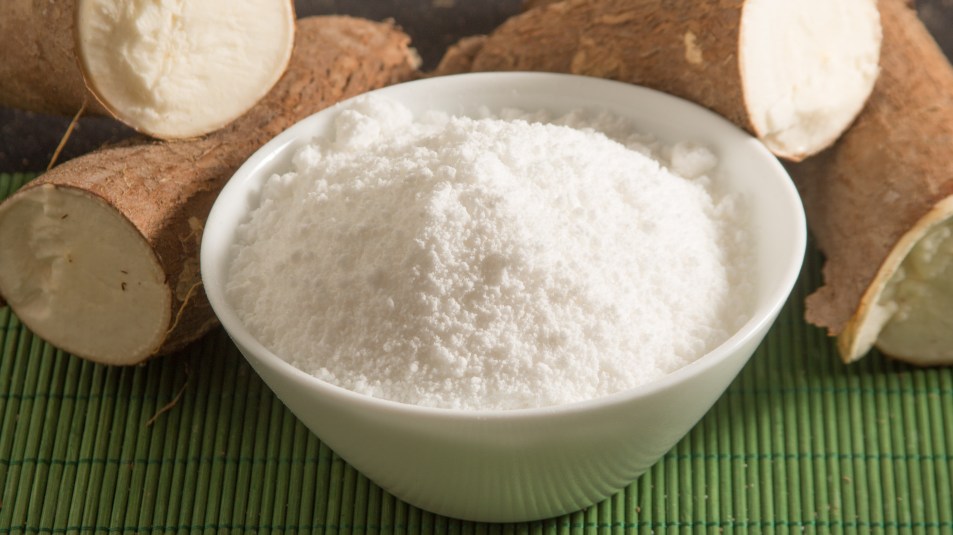Reduce Your Blood Sugar and Improve Digestion With This Gluten-Free Flour Swap

These days, many of us are looking to reduce — and even eliminate — refined wheat flour from our diets. Health experts say that eating too much of it can have detrimental effects on our health, including increasing our blood sugar levels and risk of certain diseases. Luckily, there’s another super nutritious flour replacement on the market that has certainly caught our eye — cassava flour.
What is Cassava Flour?
Cassava is a tuber root vegetable that looks almost like a sweet potato. It’s native to a number of countries and is said to be a staple in the diets of over 300 million people worldwide. And now, foodies are grating cassava, drying it, and grinding it down into a fine powder that can actually replace regular flour in a variety of recipes. But why make the switch?
The Benefits of Cassava Flour
You might want to start using cassava flour for a few reasons. For one, it contains several important nutrients that promote good health. The main nutrient in cassava is carbohydrates — specifically, a type of carb called resistant starch. Resistant starch isn’t digested by the small intestine. When you eat cassava, this resistant starch passes from the small intestine into the colon, where it gets fermented. As these starches ferment, they feed the healthy probiotic bacteria in the gut, leading to a healthier microbiome. This makes cassava what nutrition experts call a “prebiotic” food. Resistant starches have also shown to improve insulin sensitivity, reduce incidences of colon cancer and other digestive health issues, and contribute to a healthy weight.
On top of these benefits, cassava flour also contains fiber. Fiber is a nutrient that has been shown to help reduce blood sugar, improve heart health, boost immunity, and promote a healthy weight. However, the fiber is often removed from refined wheat products like bread and pasta. Cassava flour contains about five grams of fiber per serving, and adding it to your diet could help you reach the recommended daily intake, which is 25 to 28 grams a day for women — a number that most of us don’t reach!
It’s also worth mentioning that cassava flour is gluten-free. That means those who are reducing or eliminating gluten from their diets can still enjoy their favorite treats by making the swap!
Using Cassava Flour in Cooking
Cassava flour can replace regular wheat flour in baking recipes and more. Its texture and taste are very similar to wheat flour, though it does have a slightly nuttier taste. Feel free to swap in cassava flour in your favorite bread, cookie, muffin, and cake recipes. But be advised that it is lighter and absorbs more water than wheat flour, so you’ll have to use a little less than what a recipe calls for.
You can also use cassava flour to make flatbreads, pizza crust, and pasta dough and it’s a great thickener for sauces and dressings.
We’re certainly excited to incorporate some cassava flour into our cooking and baking. Here’s to a healthy summer!













